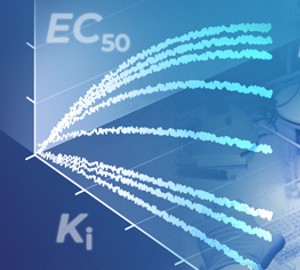
In the rapidly evolving field of biomarker analysis, understanding the nuances of different measurement approaches can significantly impact the quality and utility of your data. Two of the most prominent methods are continuous measurement and timepoint measurement. Each method serves distinct purposes, but the rise of continuous measurement, particularly in kinase activity analysis, is reshaping the landscape of drug discovery and development. In this blog, we’ll explore the key differences between these two approaches, their applications, and how AssayQuant’s advanced technology is paving the way for more efficient, real-time monitoring solutions.
What is timepoint measurement?
Timepoint measurement refers to capturing data at specific intervals during an experiment. Traditionally, researchers would take discrete readings at various time points to monitor enzyme activity or biomarker levels. This method has been widely used because it’s straightforward and offers a snapshot of biological processes at different stages.
However, timepoint measurement has limitations:
- Intermittent Data: The gaps between timepoints can miss critical dynamics or transient events.
- Labor-Intensive: Each timepoint requires manual sampling, processing, and measurement.
- Increased Variability: Each discrete step introduces potential for experimental variability, often requiring multiple replicate experiments for reliable results.
In many applications, such as drug screening, understanding the time-dependent behavior of targets like kinases is essential. But timepoint measurements can struggle to accurately represent continuous changes in these systems. This is where continuous measurement shines.
The case for continuous measurement
Continuous measurement allows for real-time data collection, offering a comprehensive and uninterrupted view of biological activity over time. This approach captures every fluctuation in enzyme activity, providing a much more granular understanding of how biomolecules behave in dynamic environments.
Key benefits of continuous measurement include:
- Real-Time Data: Capture the entire reaction process, including any transient or immediate changes.
- Increased Sensitivity: By reducing gaps in data collection, continuous measurement can reveal subtle but important changes in activity.
- Reduced Manual Effort: Once the system is set up, continuous monitoring requires less hands-on intervention.
In the context of drug discovery, particularly when studying kinase activity, the ability to monitor real-time changes is invaluable. Continuous measurement ensures that critical early or late-stage response data is not missed. This is particularly relevant in assessing enzyme inhibition or activation by potential drug candidates.
Comparing timepoint vs. continuous measurement
While continuous measurement offers many advantages, there are still scenarios where timepoint measurement is suitable.
Timepoint Measurement
Best for: Simple, end-point assays where only the final state of a reaction is of interest.
Drawbacks: Misses intermediate changes, can be labor-intensive, and is less informative for dynamic processes like enzyme kinetics.
Continuous Measurement
Best for: Complex reactions where real-time kinetics and dynamic changes are critical. Continuous measurement is especially useful in drug discovery, enabling a deeper understanding of how compounds interact with their targets over time.
Drawbacks: Requires specialised equipment and assays (though AssayQuant makes this transition seamless).
AssayQuant: The leader in continuous measurement for kinase activity
As biomarker research advances, so too must the tools and methods we use to measure biological activity. Continuous measurement is the clear evolution of traditional timepoint-based methods, offering more comprehensive data, higher sensitivity, and streamlined workflows.
AssayQuant’s PhosphoSens® technology is uniquely positioned to lead this charge, empowering researchers with real-time, continuous monitoring capabilities that provide deeper insights into enzyme kinetics and drug interactions, particularly in the field of kinase and phosphatase activity assays. Designed for real-time, continuous measurement of biomarker activity, the PhosphoSens® platform offers several distinct advantages over traditional timepoint-based approaches:
- Real-Time Kinetic Data: AssayQuant’s PhosphoSens® assays provide immediate, real-time data on kinase or phosphatase activity, allowing researchers to monitor changes as they happen. This eliminates the guesswork involved in choosing discrete timepoints and offers a clearer view of the enzyme dynamics.
- Enhanced Sensitivity: PhosphoSens® assays are highly sensitive, enabling detection of even subtle changes in enzyme activity. This is crucial when working with low-abundance biomarkers or when looking for minor but significant changes during drug development.
- Streamlined Workflow: Continuous measurement reduces the manual steps involved in traditional assays. AssayQuant’s technology is designed for ease of use and integrates seamlessly with common laboratory instrumentation, saving time and resources while delivering more comprehensive data.
- Accelerated Drug Discovery: By offering real-time insights, AssayQuant’s products speed up the decision-making process. Researchers can quickly identify promising drug candidates, assess their kinetic behavior, and make informed decisions without waiting for end-point results.
Moreover, AssayQuant’s products are designed with ease of integration in mind. Whether you’re a large pharmaceutical company or a small research lab, their continuous measurement tools can be seamlessly incorporated into existing workflows. AssayQuant products also help reduce experimental variability, lower the risk of missed data, and ultimately accelerate the discovery and development pipeline.
Explore AssayQuant’s innovative continuous measurement products and see how real-time data can transform your research.
